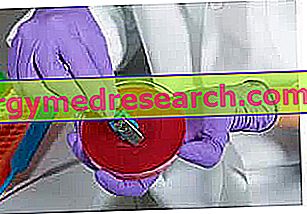What's this
What is horse liver?
The equine liver is a product of animal origin that falls within the food group of offal; within the fifth quarter of the animal - which also includes: coratella, tripe, rinds, heart as food, brain as food, spleen as food, language as food, nerves etc - is probably one of the most consumed cuts.
Curiosity
For equine we mean mainly horses and donkeys or donkeys, possibly hybridized in mules and bardards - but it is a more unique and rare eventuality. Note : regardless of ethics, young animals such as foals and donkeys are considered more suitable for consumption - due to the soft consistency of the meat.
That of equines ( Equus ) is a biological Genus belonging to the Equidae Family and Classe Mammalia. The horse is best identified as an E. caballus species, while the donkey is known as E. asinus .
The equine liver is classified in the first fundamental group of foods, since it contains proteins with high biological value, specific minerals and vitamins. It also uses more than relevant nutritional concentrations of: other water-soluble vitamins - different from those typical of the group of foods in question, such as folic acid and vitamin B12 or cobalamin - fat-soluble vitamins - vitamin A or retinol and vitamin D or calciferol - other minerals different from those typical of the group of foods in question - for example zinc, selenium and phosphorus - cholesterol, purines, etc. The equine liver also provides a small concentration of glycogen - a reserve carbohydrate, however strangely detected as soluble carbohydrates - and of vitamin C or ascorbic acid. The nutritional characteristics of equine liver reflect its biological functions; for more information read also: Liver as Food.

Equinus liver can be inserted in almost all diets; the diet against metabolic disorders and the nutritional regime of pregnant women are exceptions or require greater care. The average portion is equal to or less than that of the muscle and the frequency of consumption must respect the recommendations disclosed for the meat. It is always advisable to pay attention to the level of hygienic safety of the product.
The equine liver is not the most commonly used for food purposes. It is surpassed by hen's liver (liver), bovine liver and pork liver; it has a level of consumption similar to sheep's liver.
Nutritional Properties
Nutritional properties of equine liver
The equine liver belongs to the first fundamental group of foods - nutritional source of essential amino acids, mineral salts and specific vitamins.
It has a medium energy supply, mainly provided by proteins, followed by lipids and finally by few carbohydrates. Peptides have a high biological value, ie they contain all the essential amino acids in the right quantities and proportions with respect to the human protein model. The amino acid profile of the equine liver is largely made up of: glutamic acid, aspartic acid, leucine and lysine; remarkable the presence of phenylalanine. The equine liver has a high amount of energy fats - fatty acids organized in triglycerides - only when supercharged. The lipid profile of the equine liver should highlight a prevalence of unsaturated fats on saturated fats - the latter still relevant. Carbohydrates are made up of glycogen; however, in the nutrition tables they are referred to as soluble carbohydrates.
The horse's liver does not contain fiber and is rich in cholesterol - regardless of the nutritional status of the slaughtered animal. It does not contain lactose, gluten or histamine; instead purines abound.
With regard to vitamins, equine liver contains all the solubles of group B: thiamine (vit B1), riboflavin (vit B2), niacin (vit PP), pantothenic acid (vit B5), pyridoxine (vit B6), biotin ( vit B8 or vit H), folic acid and cobalamin (vit B12); the presence of ascorbic acid (vit C) is curious and unique in its kind, but quantitatively scarce. The contribution of two liposoluble vitamins is also excellent: retinol (vit A) and calciferol (vit D). Note : folic acid and vitamin C are thermolabile, which is why they do not "resist" cooking and are mostly inactivated.
As far as minerals are concerned, equine liver is distinguished by its significant concentration of: bioavailable iron, zinc, phosphorus, selenium, potassium, copper and molybdenum.

| Equine Liver | |
| Nutritious | Quantity' |
Edible part | 100% |
| water | 67.8 g |
| Protein | 22.4 g |
| Lipids | 4.0 g |
| Saturated fatty acids | - |
| Monounsaturated Fatty Acids | - |
| Polyunsaturated Fatty Acids | - |
| Cholesterol | - g |
| TOT Carbohydrates | 5.3 g |
| Starch / Glycogen | - g |
| Soluble Sugar | 5.3 g |
| Food fiber | 0.0 g |
| Soluble | - g |
| Insoluble | - g |
| Power | 145.0 kcal |
| Sodium | - mg |
| Potassium | - mg |
| Iron | 9.0 mg |
| Football | 8.0 mg |
| Phosphorus | 358.0 mg |
| Magnesium | - mg |
| Zinc | - mg |
| Copper | - mg |
| Selenium | - mcg |
| Thiamine or vitamin B1 | 0.30 mg |
| Riboflavin or vitamin B2 | 2.88 mg |
| Niacin or vitamin PP | 14.7 mg |
| Vitamin A or RAE | 11000.0 mcg |
| Vitamin C or Ascorbic Acid | 30.0 mg |
| Vitamin E or Alpha Tocopherol | - mg |
Hygiene
Hygienic aspects of equine liver as a food
Being the organ mainly responsible for metabolic processes, the liver can contain unwanted molecules, both of pharmacological derivation and of environmental or alimentary origin - for example dioxins, methylmercury, selenates, etc. This depends above all on the lifestyle of the slaughtered animal. The equidae for slaughter are mainly animals reared specifically for food, which is why the use of antibiotics and anabolics varies considerably according to the source of supply. The same applies to environmental pollutants, especially when the animals feed and water on land or compromised aquifers. The hypothesis that feeds contain pollutants - especially certain metals - is remote, but not impossible.
Furthermore, equines can also be affected by parasites; for this reason, prior to trade, veterinary inspection of farmed animals is essential.
In general, it is advisable to choose guaranteed products, equipped with traceability and tracking; buying a horse liver taken from slaughtered animals at home can prove to be at least a rash choice.
Diet
Horse liver as a food in the diet
The equine liver is an inexpensive and very nutritious food that lends itself to the diet of all healthy subjects. In the slimming diet it is instead advisable to reduce any fat used in cooking, oil or butter, to ensure a normolipid and low-calorie intake.
Despite the good ratio of fatty acids (saturated: unsaturated = <1), due to the high cholesterol content, equine liver is not particularly suitable in case of hypercholesterolemia. In a portion of equine liver it should find at least 50% of the recommended daily cholesterol ration and 75% for a hypercholesterolemic.
The equine liver, rich in proteins of high biological value, is very useful in the diet of those who are in conditions of increased protein requirements; for example: pregnancy and lactation, growth, extremely intense and / or prolonged sports, old age - due to an eating disorder and a tendency to malabsorption - malabsorption, recovery from specific or generalized malnutrition, debasement.
The equine liver provides a significant amount of phenylalanine and is not among the foods suitable for phenylketonuria.
It is an excellent food source of bio-available iron and, regularly consumed in the diet, optimizes the coverage of the recommended ration. This is greater, and related to iron deficiency anemia, in fertile women - especially pregnant women - in marathon runners, vegetarians - especially in vegans. It contributes to the coverage of the phosphorus requirement, abundant in the organism and in particular in the bones and in the phospholipids - of the cellular membranes, in the nervous tissue etc. The content of zinc and selenium is more than appreciable; these two antioxidant minerals also have many other functions: zinc is essential for hormonal and enzymatic production, selenium for the health of the thyroid gland. It is not considered a primary source of potassium, but still contributes to the coverage of the specific requirement - greater in case of increased sweating, for example in sports, increased diuresis and diarrhea; the deficiency frequently leads to the onset of cramps and weakness. It is an alkalizing agent necessary for the functioning of the membrane potential which can be useful in the fight against high blood pressure.
The equine liver is rich in B vitamins, all coenzymatic factors of great importance in cellular processes. It can therefore be considered an excellent support for the correct functioning of all body tissues. The vitamin D content is important and very useful; also called calciferol, it is generally rare in food - because it is largely produced in summer skin - but necessary for the functioning of the immune system and bone metabolism. The equine liver recommended in the diet of the growing subject and also in the preventive osteoporosis. Very rich in vitamin A, it helps support visual function, cell replication, reproductive function, etc. However, given and considering the potential teratogenic effects related to the nutritional excess of this vitamin, it is advisable for pregnant women to pay attention to excesses.
The content of vitamins normally extraneous to foods of animal origin is interesting, although of secondary importance; we are talking about folic acid - necessary for the replication of nucleic acids and very important in pregnancy - and vitamin C - antioxidant and essential for the immune system. The equine liver is a food that - for hygienic, organoleptic and gustatory reasons - needs a deep cooking, up to the heart of the food, with temperatures higher than those of pasteurization. Folate and vitamin C are very vulnerable to high temperatures, as a result of which they tend to degrade, therefore the equine liver cannot therefore be considered a significant source of these nutrients.
Containing important levels of purines, equine liver is not recommended for those suffering from hyperuricemia - especially severe, with gouty attacks - and for those who have a greater tendency to calculosis / renal urinary lithiasis.
It is instead pertinent in lactose intolerance, in celiac disease and in histamine intolerance. It is not allowed in the vegetarian and vegan diet. It is inadequate for Hindu and Buddhist food; should not have contraindications for those Muslim and Jewish.
For the hygienic aspects mentioned above, it is necessary that subjects with compromised immune system or in special conditions - for example pregnant women - pay particular attention to the cooking of equine liver - which must be total and deep - but above all to the choice of the supply source, which must necessarily be of a regular and certified type, and possibly of a high quality standard.
The average portion of equine liver is 100-150 g (about 140-210 kcal).
Kitchen
Advice for purchases of equine liver
To recognize a good equine liver from a poor quality one, we must recognize it:
- Bright, turgid and NOT dehydrated appearance
- Typical color (depending on the animal species of origin), not spotted or dotted.
Being highly perishable, it is necessary that the equine liver is always kept in refrigeration or by freezing.
Culinary aspects of equine liver
That of equine has a very intense taste but, among the various types offered on the market, it is not the strongest and most demanding - instead attributed to the pork liver. The taste is initially sweet, secondarily replaced by clearly bitter notes. The sensation of being held is characteristic of all livers.
The equine liver is an exclusively cooked food to eat. The preferred processing methods are those for conduction, in a pan or casserole, but often it is also prepared in the oven or on the grill.
The most common recipes based on equine liver are the same as for pork liver and bovine liver.



